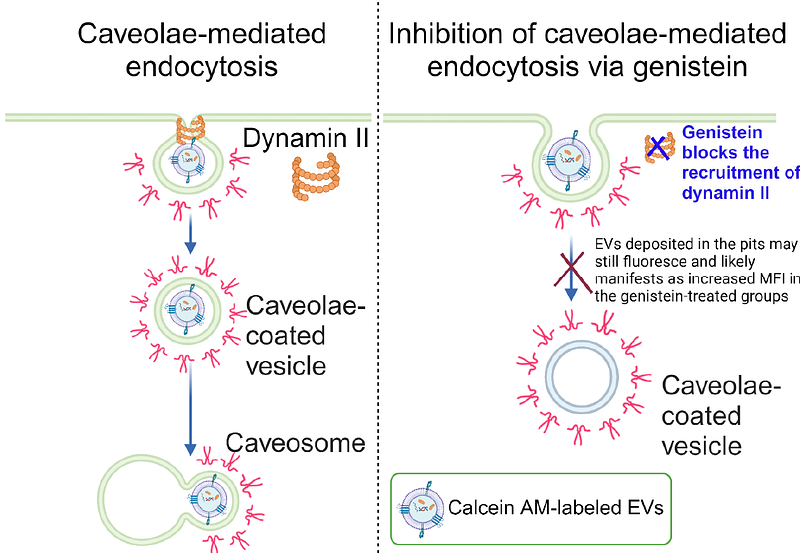Effect of homotypic vs. heterotypic interactions on the cellular uptake of extracellular vesicles

Effect of homotypic vs. heterotypic interactions on the cellular uptake of extracellular vesicles
Jhaveri, J. R.; Khare, P.; Kamte, Y. S.; Chandwani, M. N.; Pinky, P. P.; Milosevic, J.; Abraham, N.; Zheng, S.-y.; O'Donnell, L.; Manickam, D. S.
AbstractExtracellular vehicles (EVs) are an emerging class of drug carriers and are largely known to be internalized into recipient cells via a combination of endocytic routes such as clathrin-mediated, caveolae-mediated and macropinocytosis pathways. In this work, (1) we investigated potential effects of homotypic vs. heterotypic interactions by studying the cellular uptake of homologous EVs (EV donor cells and recipient cells of the same type) vs. heterologous EVs (EV donor cells and recipient cells of different types) and (2) determined the route of EV internalization into low pinocytic/hard-to-deliver cell models such as brain endothelial cells (BECs). We used BECs and macrophages as low-pinocytic and phagocytic cell models, respectively, to study the effect of homotypic vs. heterotypic interactions on EV uptake in the recipient cells. Homotypic interactions led to a greater extent of uptake into the recipient BECs compared to heterotypic interactions. However, we did not see a complete reduction in EV uptake into recipient BECs when endocytic pathways were blocked using pharmacological inhibitors. Our results suggest that EVs primarily use membrane fusion to enter low-pinocytic recipient BECs instead of relying on endocytosis. Lipophilic PKH67 dye-labeled EVs but not intravesicular esterase-activated calcein ester-labeled EVs severely reduced particle uptake into BECs while phagocytic macrophages internalized both types of EV-labeled particles to comparable extents. Our results also highlight the importance of carefully choosing labeling dye chemistry to study EV uptake, especially in the case of low pinocytic cells such as BECs.